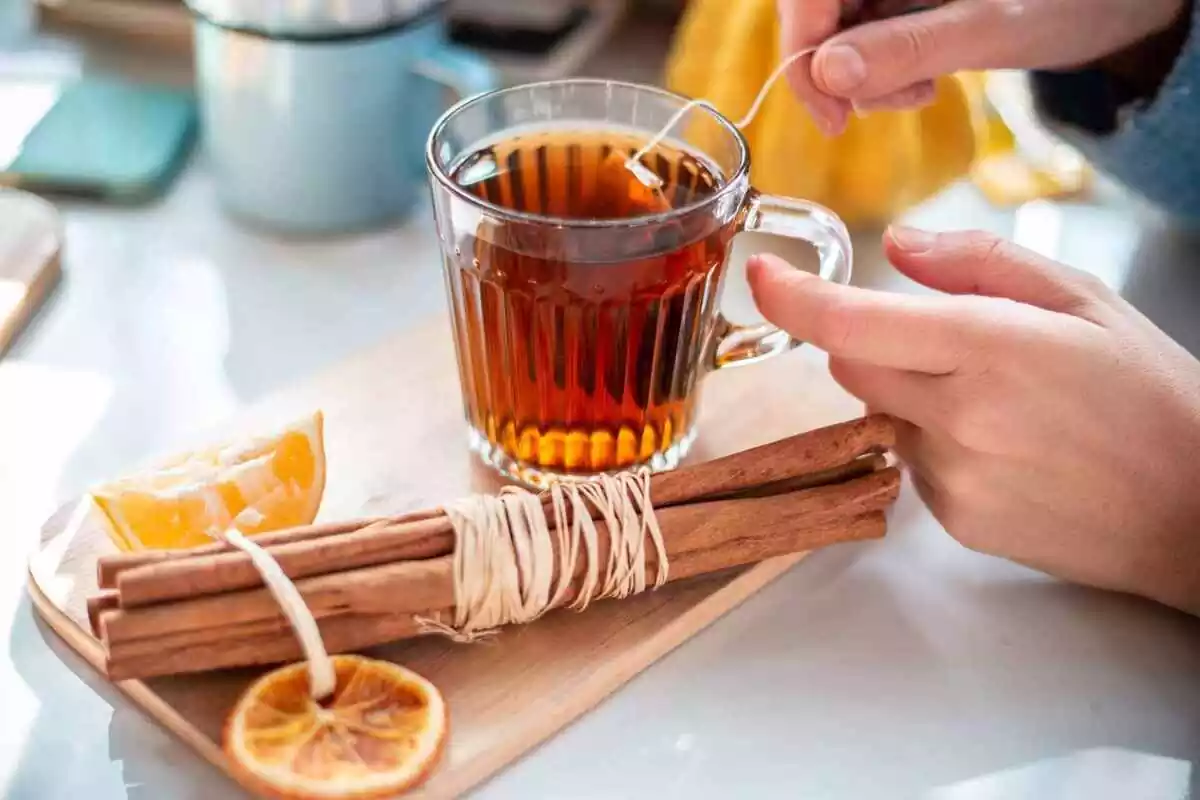Infusions are natural beverages made by steeping leaves, roots, or fruit in water. This method has been practiced for millennia to extract substances from natural elements beneficial to humans.
Here we break down exactly what infusions are, what kinds are out there, and their benefits. Besides, we take a closer look at 6 of the most popular infusions: tea, coffee, mint tea, yerba mate, and linden tea.
What are infusions?
Infusions are hot drinks obtained by extracting chemical compounds from plants and their leaves and fruits using water, oil, or alcohol. These beverages are made by submerging organic substances in hot, but not boiling water, for just the right amount of time until the flavors and natural properties dissolve into the water.
After mineral water, infusions are some of the most widely consumed drinks globally. Tea is the most popular type. However, there are many other varieties out there that use different ingredients that we'll analyze.
For millennia people have known about the healing properties found in infusions. These drinks are used to treat and even prevent different health conditions. Currently, in most countries, people drink them because of their delicious flavor, aroma, and therapeutic benefits.
In Asian countries like China and India, green tea has a 5,000-year history. Coffee, on the other hand, originally from Ethiopia, is another infusion whose popularity has skyrocketed recently.
6 popular infusions
Beneficial plants and herbs that date back to antiquity are ingredients in countless infusions. Below, we share the 6 most popular infusions worldwide.
1. Tea
Tea is the most consumed infusion in the world. Originally from China, this drink was only enjoyed by the elite until the 16th century, when it arrived in Europe. After this, everyone was able to enjoy this hot drink coveted for its aroma and flavor.
Nowadays the variety of teas that you can find in any shop is incredible. The most common types in the West are green tea, black tea, and oolong (blue tea).
2. Coffee
Coffee is the second most popular infusion in the world, right after tea. Generally speaking, tea is consumed more in Eastern countries, while coffee unarguably forms a part of Western culture and eating habits.
Coffee is a hot beverage made by roasting and grinding coffee beans. Upon the arrival of this product from the African continent and Asia to Europe in the 16th century, there was a brief period of prohibition during the first few years due to religion in Protestant countries. Even so, over time it still went on to become one of the most popular drinks in Europe and the Middle East.
3. Mint tea
Mint is an aromatic herb found across the globe. It's been used for thousands of years because of its healing properties and culinary applications in a wide variety of dishes.
The exact origins of this herb are unknown. However, before the first century, in the age of the Roman Empire, there is evidence of its use in different recipes.
Mint is highly valued in Arabic countries because of its scent and flavor. In countries like Morocco, Lybia, and Turkey this ingredient is used in herbal teas and both sweet and savory dishes alike.

4. Yerba Mate
Yerba mate is an infusion made from the leaves of the mate plant. Before making this brewed drink, the herb must be cut, dried, and ground. People often add different aromatic leaves or natural sweeteners because of this hot drink's acidic flavor.
Yerba mate is an infusion typical of Argentina, Uruguay, and Paraguay. In fact, the Guaraní people, native to this region, were the first to make this beverage.
The Spanish colonizers took a liking to this infusion which is why its consumption has become so widespread today.
5. Camomile tea
Chamomile tea is one of the most popular herbal teas out there. This medicinal plant can be found in Europe and Asia and resembles tiny white and yellow daisies. Since the Middle Ages, chamomile flowers have been considered medicinal since they helps to improve such a wide variety of conditions.
6. Linden tea
After chamomile, linden tea, made from lime tree blossoms, is one of the most popular herbal teas because of its health benefits. Its powerful effects mean that this plant is perfect for use in natural remedies.
Benefits
Drinking infusions on a regular basis can undoubtedly be beneficial for the health, besides providing many nutrients to the body.
In countries where the daily consumption of infusions is widespread, the population lives a much healthier lifestyle, and there are even lower rates of some health conditions.
Tea
The benefits reaped from tea depend on the type consumed. For example, green tea is an antioxidant, can prevent heart disease, lower cholesterol, and even help with weight loss.
Drinking black tea also reduces the risk of developing certain health conditions like cardiovascular problems, and some types of cancer. Besides, this infusion is a natural diuretic.
Coffee
The benefits of drinking coffee are the following: it's a stimulant -thanks to its high caffeine content, it burns fat, is rich in vitamins and minerals, and reduces the risks of developing neurodegenerative diseases and diabetes.
However, coffee should be consumed in moderation (no more than a couple of cups a day) since drinking too much of this hot beverage could damage the digestive system and cause other issues.
Mint
Mint has many health benefits, for example, it can be used to treat gastrointestinal diseases like irritable bowel syndrome, spasms, and is an excellent antiseptic. Besides, it helps to reduce respiratory problems, gas, and stomach inflammation. And to top it all off, it reduces the risk of certain types of cancer including prostate cancer.
Yerba Mate
According to many yerba mate is an invigorating antioxidant that helps to protect cardiovascular health and reduces cholesterol levels.

Chamomile
Chamomile has an endless list of benefits. Here are a few that are worth mentioning: anti-inflammatory properties, the ability to improve respiratory symptoms and stomach pain. Besides, it helps with chronic, menstrual, and arthritis pain, and protects the stomach from ulcers and gastritis and works as a potent anti-allergen and anti-bacterial agent.
Linden tea
Linden blossoms work as a mild sedative since they have anxiolytic and antispasmodic properties that help to bring sleep. With this in mind, it's best to avoid consuming this plant and chamomile before taking part in any kind of activity that could involve a personal risk or if experiencing stomach pain of an unknown nature.
